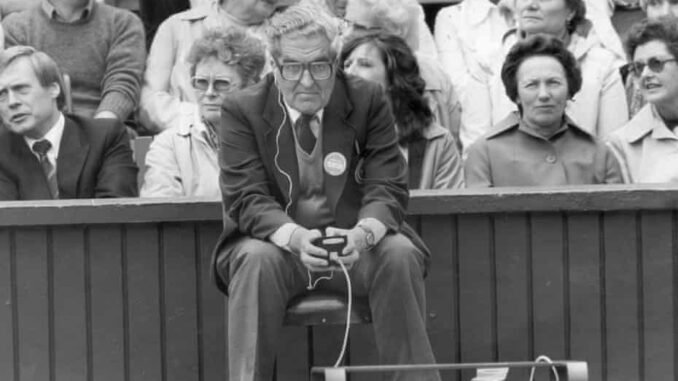
A Futile Gadget: Wimbledon’s 1980 Rebellion Against Electronic Line Calls…Read More…
In the summer of 1980, Wimbledon—home of elegance, grass courts, and timeless tennis tradition—found itself tangled in a very modern controversy. For the first time in its illustrious history, the All England Club had introduced an experimental electronic line-calling device. Its mission was simple: eliminate human error. Its result? A spectacular failure. Players, officials, and spectators soon branded the innovation not as a technological leap forward, but as “a futile gadget.”
The device, an early attempt to automate line calls using sensor technology, was trialed on select courts. Positioned along the baselines, it was programmed to detect when a ball landed outside the lines and respond with an audible beep. But instead of resolving disputes, the system stirred confusion, triggered mistrust, and, in many cases, became the very cause of the arguments it was designed to avoid.
“It’s not consistent,” lamented American serve-and-volleyer Roscoe Tanner after one particularly chaotic match. “It beeped late, then didn’t beep at all. Either you trust it or you don’t—but I don’t.” Tanner, known for his powerful, lightning-fast serves, was one of several players who doubted the machine’s ability to cope with top-level pace. “The ball’s in and out before it even reacts.”
John McEnroe, then just beginning to make his mark as a volatile and outspoken star, was even less diplomatic. During his second-round match, after a key serve was called out by the machine, McEnroe exploded. “This is a joke!” he shouted at the chair umpire. “This isn’t tennis—it’s a science experiment!”
The crowd at Centre Court responded with a mix of laughter and jeers. Some fans were intrigued by the novelty, but most found the device frustrating and intrusive. “It disrupts the rhythm,” said long-time Wimbledon spectator Margaret Ellison. “One moment, we’re watching beautiful play. The next, everyone’s turning to see if the machine makes a sound.”
That sound—or the lack of it—became a central problem. In several matches, the device failed to activate on clearly out shots, or beeped long after the ball had bounced, creating awkward pauses. Some chair umpires began to override the system entirely, relying on their own judgment or that of line judges. The result was chaos, as players didn’t know whether to trust human eyes or robotic ears.
The backlash reached such a pitch that officials from the All England Lawn Tennis Club were forced to address the issue publicly midway through the tournament. Roger Wakeley, a club spokesperson, acknowledged the criticism but defended the intentions behind the technology. “We are attempting to modernize in ways that maintain fairness,” he said. “But clearly, improvements are needed.”
The system had been developed by a small UK-based electronics firm that insisted their design was reliable under test conditions. But Wimbledon was no lab, and the unforgiving scrutiny of the global tennis community left little room for excuses. In the end, the message was loud and clear: the gadget wasn’t ready—and the sport wasn’t either.
Beyond the logistical failures, the cultural clash between tradition and technology was palpable. Wimbledon, more than any other tournament, clings to history. White attire, manicured lawns, and the ritual of human judgment are not just aesthetic choices—they’re part of the identity. To many, the intrusion of a buzzing electronic gadget felt like a violation of the game’s soul.
“There’s a beauty in imperfection,” said commentator and former champion Fred Perry. “We remember matches for their drama, even their controversies. Take that away, and you risk sterilizing the sport.”
Despite the outcry, some players, including Björn Borg, offered more measured opinions. “Maybe not now,” Borg said when asked about the technology. “But in the future, yes. If it becomes more accurate. Tennis can change—but slowly.”
And change it eventually did. But the device used at Wimbledon in 1980 was quietly abandoned after that tournament. By the next year, the idea of electronic line calls had been shelved indefinitely. No public statement was issued, no official apology made. The gadget simply disappeared from the courts—along with any pretense that the sport was ready for such innovation.
In hindsight, that summer became a pivotal moment in the long relationship between tennis and technology. While today’s players routinely rely on Hawk-Eye for instant reviews and indisputable accuracy, the road to that system was paved with early failures—and none more dramatic than the short-lived and much-maligned Wimbledon “beep box” of 1980.
As tennis continues to evolve, the memory of that futile gadget lingers like an echo from the past. It reminds the sport—and its stewards—that progress, however necessary, must walk hand in hand with patience, readiness, and above all, respect for the game’s enduring heartbeat.
Because at Wimbledon, even change must wear white.
Leave a Reply